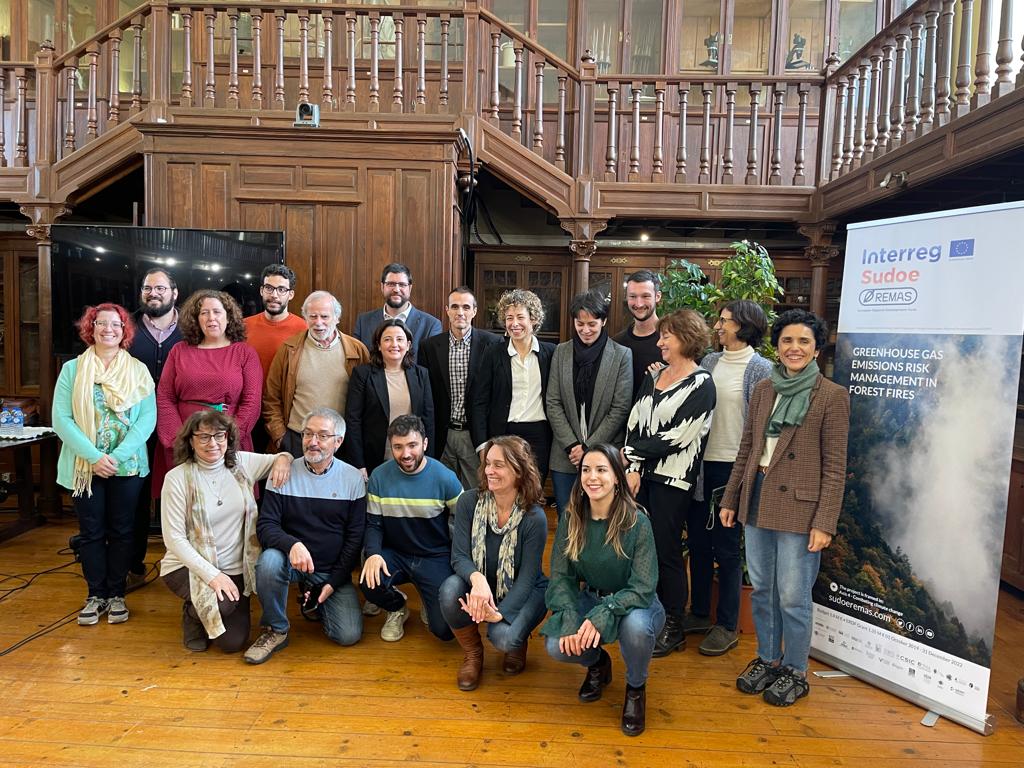
REMAS - Results
Gestión del riesgo de emisiones de gases de efecto invernadero en incendios forestales
Greenhouse gas emission risk management in forest fires
Productos/ Products
The basis for defining priority areas for forest management. This product contributes to the specific objective of developing an interactive GHG emission risk model of the different carbon sinks of forest ecosystems according to climate change scenarios.
Contributes to communicate the knowledge acquired in order to lay the foundations for the advantages of adopting the REMAS model within the strategies for preventing and managing the risk of emissions from forest fires, including the methodology for validating the model, as well as the main conclusions obtained..
Consists of establishing an action protocol to minimize GHG emissions by improving the sustainable forest management of burned areas and mitigating the degradation of carbon sinks.
Considers the existing risk of emissions and carbon stocks in the different regions, determining the most vulnerable and preferential areas to be included in the territorial management measures, incorporating measures to safeguard and increase carbon reservoirs.
The training courses allow the transfer and capitalisation of the products obtained in other working groups, such as the methodology for estimating the risk of GHG emissions, as well as the action protocol for minimising GHG emissions in disaster areas and increasing the carbon sequestration and fixation capacity of damaged ecosystems.
The platform allows for improved coordination between key actors, bringing together the results and synergies obtained in REMAS in the same interactive and knowledge-sharing space.
In order to improve the coordination and effectiveness of emission risk prevention and management plans with measures to safeguard and increase carbon stocks, it is essential that the involvement of authorities with legal capacity to act is reflected in a document that reflects their willingness to include emission risk in forest planning and management instruments.

Entregables/ Deliverables
Database on vulnerable forest ecosystems
Soil, vegetation and satellite image inventory data are included in a database for use in the REMAS activities. Access to the metadata is made available to other researchers
Emission risk mapping
The resulting maps are homogenised for consultation and used by all interested parties in accordance with the INSPIRE Directive on spatial data, which is applied by the administrations using the project results.
Good practices for carbon sequestration and restoration in biomass and soils on damaged ecosystems
The guide compiles the action protocols for the reduction of the risk of emissions in post-fire management, with a technical, clear and common language for users, as a basic document to improve the management of burnt areas.
Good practice guidelines for mitigating the risk of GHG emissions from forest fires
This guide compiles best practices for the inclusion of GHG emission risk in the hierarchical planning (strategic, tactical and operational) in forest fire prevention and management plans
Emission risk prevention and management guidelines
It details the guidelines to be taken at regional and transnational level for the consideration of emission risk in forest fire planning and management plans
Training seminars and model workshops on emission risk prevention and management
Report prepared after the training actions including the organisation and dissemination of the course, trainers and participants, including the results of the evaluation questionnaires at technical and practical level.
Línea de tiempo/ Timeline

